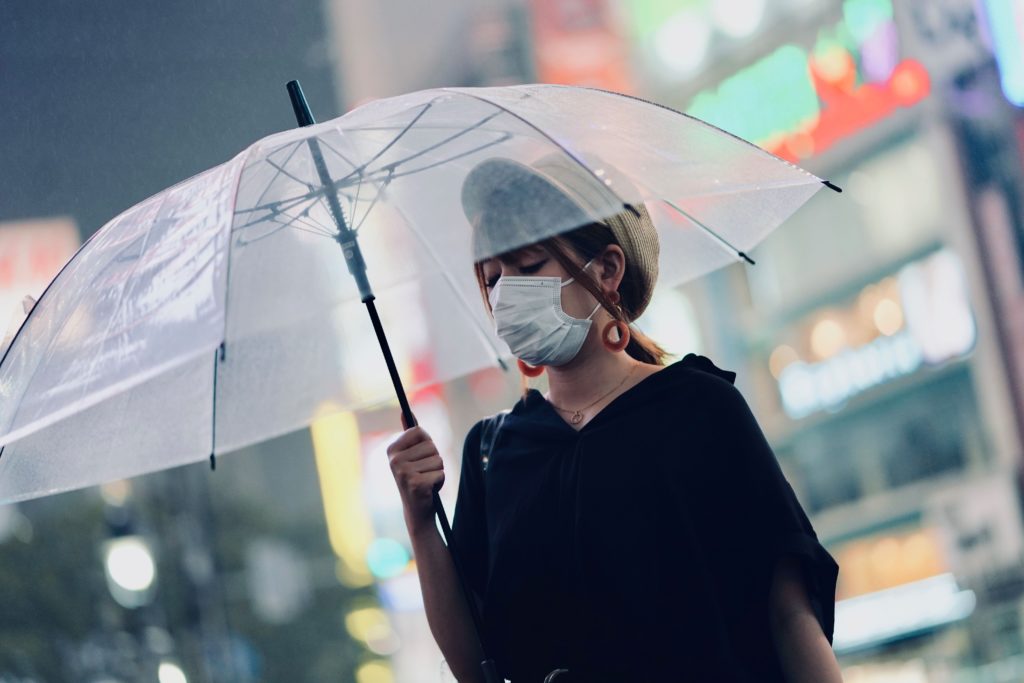
Simon Kolstoe, University of Portsmouth
Should we wear face masks? We tell our children to cover their mouths when they cough, so when we cannot predict who may or may not have COVID-19, it makes sense to wear a face covering in public.
But not all face coverings are the same. They can be split into two broad categories: respirator masks designed primarily to protect the wearer and cloth face coverings that could be considered to act more as breath diverting devices.
Although breath diverting devices offer a small amount of protection, especially against splashes of liquid, their main role is to stop exhaled breath travelling too far away from the wearer. It makes sense to wear one if the aim is to avoid breathing over other people.
Although the virus itself can easily pass through such face coverings, if designed well they can be effective in reducing the extent of spread. Hence recent advice to wear face coverings, especially in enclosed indoor spaces.
The other type, respirator masks, comes in a large variety of types and fittings ranging from the full-faced self-contained breathing apparatus (SCBA), through to disposable masks referred to as “filtering face pieces” (FFP).
In the UK and Europe, FFPs can be split into three categories depending on how many salt particles (median diameter of 0.6 micrometres) and oil particles (median diameter 0.4 micrometres) they let through, along with several other parameters (for comparison a human hair is about 75 micrometres across). FFP1 masks can prevent 80% of test particles passing through, FFP2 94% and FFP3 99%.
This relatively high filtration efficiency of FFP masks also makes them quite difficult to breathe through, so a valve is sometimes added. As the aim of the valve is to make it easier to breathe for the wearer, the valves tend to filter the air coming in, but not as much going out. As a result, they are designed to protect the wearer from the environment, not the environment from the wearer.
Who are we protecting?
This distinction between face coverings designed to protect the wearer, and those that may protect other people, has been central to the recent debate about face masks. In clinical settings, masks are normally used as part of personal protective equipment (PPE).
However, severe shortages of PPE throughout the pandemic have made it important that the most effective PPE is reserved for healthcare workers and others on the frontline. Panic buying PPE puts healthcare workers at risk.
Outside of the clinical environment, the situation is very different. Although from a personal perspective we would all like to be protected from getting the virus, the shortage of PPE means that the key aim is to stop the virus spreading in the wider population, not protecting specific individuals.
This is why, rather than PPE, we are being encouraged to wear face coverings that divert our breath so that if we are carrying the virus, there is less chance of spreading it to other people.
Surgical masks are the only type of breath diverting masks that are constructed to specific standards (they are considered medical devices in the EU). The vast majority of other face coverings that people buy or make are not constructed to any specific standard meaning their effectiveness is highly variable, although new guidance for making homemade face coverings is increasingly recommending designs and materials known to work well.
When it comes to good design, a well-fitted face covering covers the mouth, nose and chin, with loops around the ear ensuring no gaps on the sides. This is important because although your breath will pass through the cloth, the aim is to slow it down so that it does not spread as far.
Ironically, if the aim is to divert breath to protect other people, a second argument against wearing face masks designed for PPE becomes relevant. Rather than diverting breath, FFP masks with valves direct the breath out in a specific direction through the valve. As a result, protecting the wearer could come at the expense of those standing in front of the valve.
This is the reason the California Bay Area has banned the wearing of masks with valves in public. The San Francisco fire department has made a video urging double masking to ensure both the wearer and those around them are protected. Others are suggesting covering valves with tape. It is also notable that these masks are almost always worn with a plastic face shield in clinical environments so that both the healthcare worker and the patient are protected.
Without enforced standards, the effectiveness of face coverings will always be variable. This variability has been the cause for much of the debate over the use of face coverings. Unfortunately, it has taken many months for western nations, in particular, to understand that the reason we must wear face coverings in public is not to protect individuals, but rather to make a small contribution to protecting everyone.
So it is perhaps ironic that the most effective PPE masks designed for protecting individuals could be one of the least effective for protecting all of us.
Simon Kolstoe, Senior Lecturer in Evidence Based Healthcare and University Ethics Advisor, University of Portsmouth
This article is republished from The Conversation under a Creative Commons license. Read the original article.


